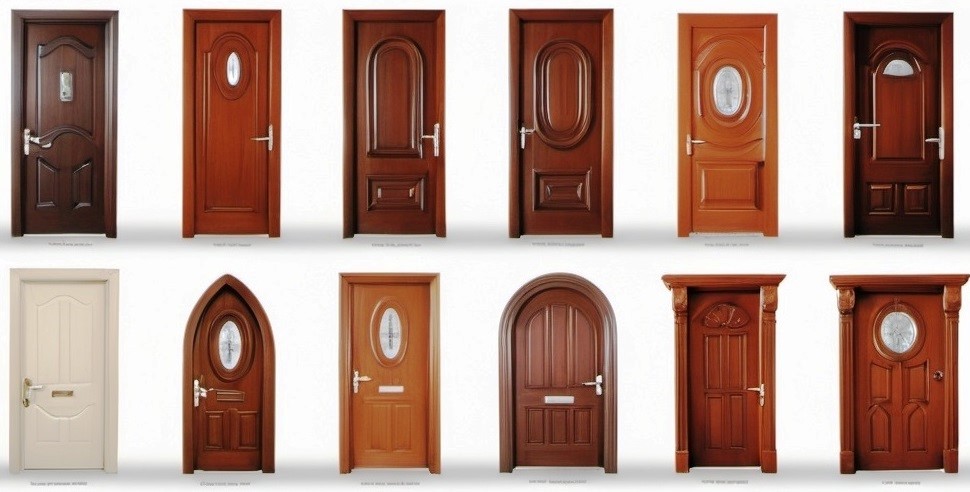Table of Contents
Solid Wood Doors (Introduction)
Solid wood doors or hardwood doors are made of pure natural wood and it is oldest and most trusted choice in door making. Their natural texture and durability make it best option to enhance the aesthetic of any space. The types of solid wood doors vary based on the wood species used in its manufacturing. Each type of solid wood offers distinct characteristics suited for different needs and preferences.
Teak Wood Door
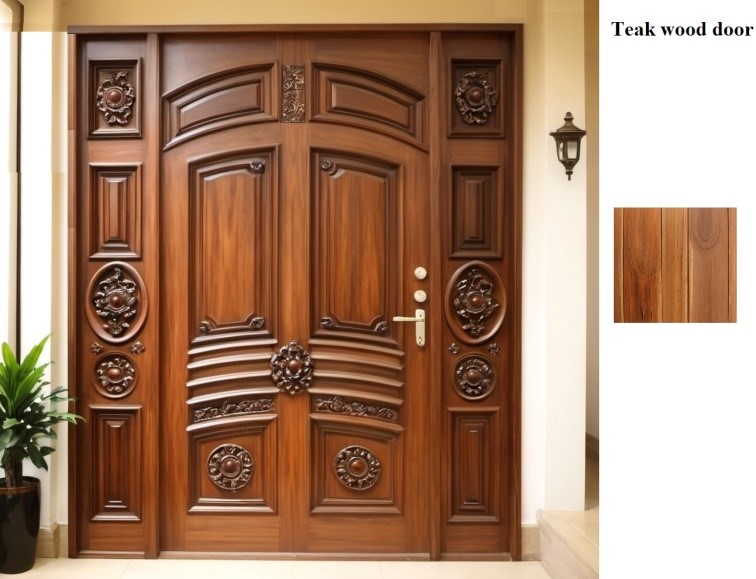
Cost Effect: Expensive
Teak Wood Door are Known for its durability and water resistance. Teak is a premium choice due to its rich, golden brown color and natural oils make it highly resistant to decay and insects. This type of solid wood door is ideal for luxury homes.
Deodar Wood Door

Cost Effect: Moderately Priced
Deodar wood doors are valued for their natural aroma and resistance to pests and decay. This wood is light but strong with a fine and even grain. Its inherent durability and unique fragrance make it a popular choice for traditional homes and religious structures. Deodar wood is ideal for use in humid climates due to its natural resilience.
Oak Wood Door
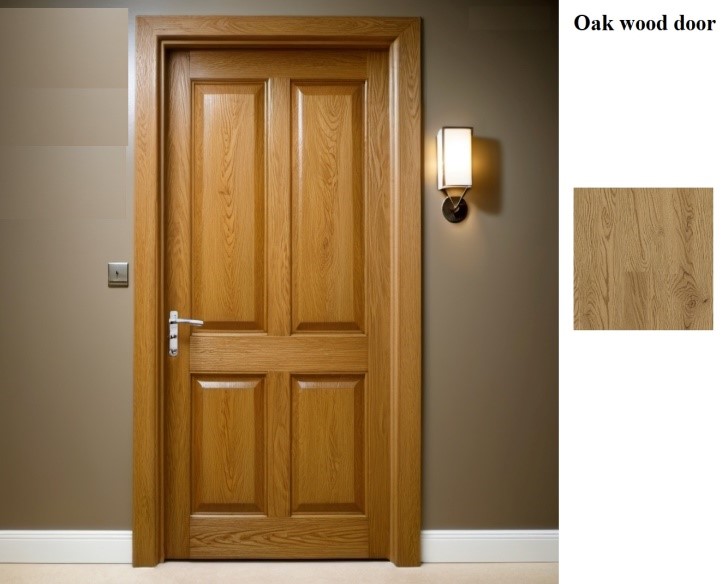
Cost Effect: Moderately Priced to Expensive
Oak wood doors are renowned for their strength and distinct grain patterns. White oak is particularly prized for its water resistance, making it suitable for both interior and exterior applications. Oak doors add a warm and classic charm to any home with natural hues ranging from light brown to reddish tones.
Maple Wood Door
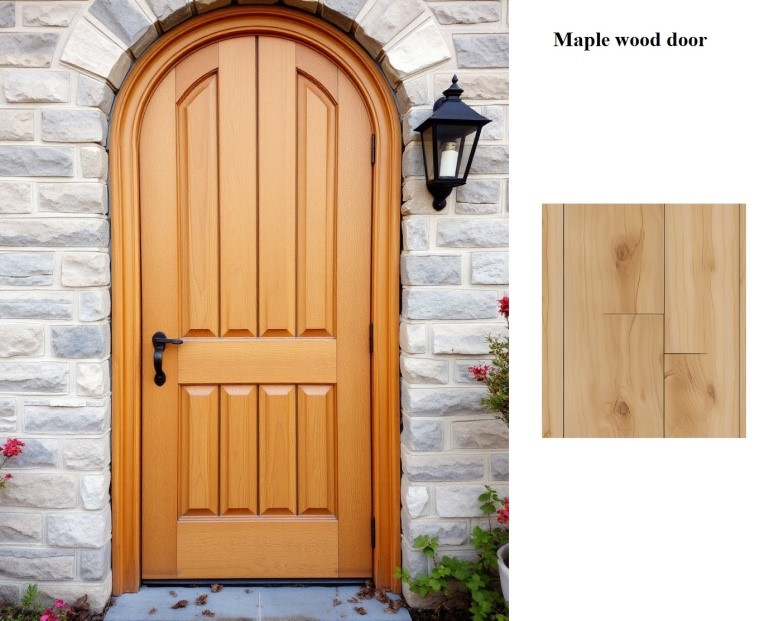
Cost Effect: Moderately Priced
Maple wood doors are known for their durability and smooth, uniform texture. Maple wood is light colored wood, which ranges from creamy white to light reddish brown. Maple’s dense structure makes it resistant to bear and making it an excellent choice for high public load areas.
Mahogany Wood Door
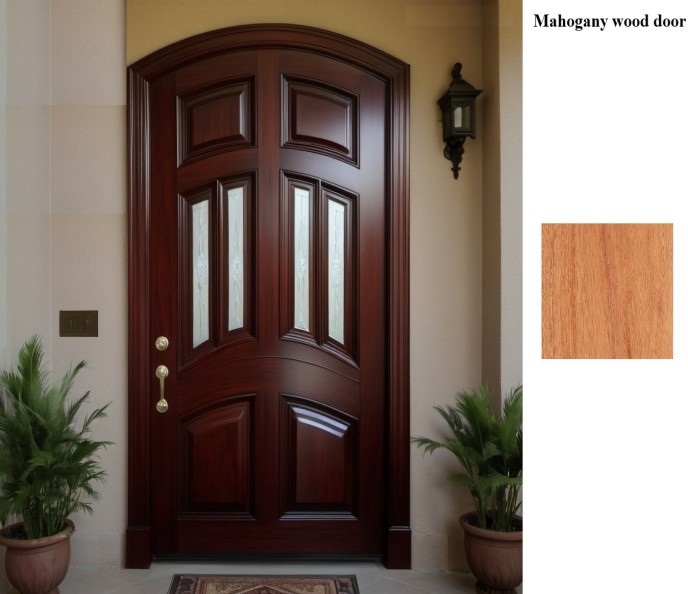
Cost Effect: Expensive
Mahogany wood doors are a premium choice with its rich reddish brown color and exceptional durability. This hardwood’s straight grain and smooth texture give it a luxurious appearance. Mahogany is resistant to warping and moisture, making it ideal for both interior and exterior doors also suitable in luxury homes.
Pine Wood Door

Cost Effect: Economical
Pine wood doors are lightweight, affordable and versatile, known for their pale yellow to light brown color. While softer than other hardwoods, pine is easy to work with and can be stained or painted to match various design aesthetics, making it a popular choice for budget friendly and stylish homes.
Birch Wood Door
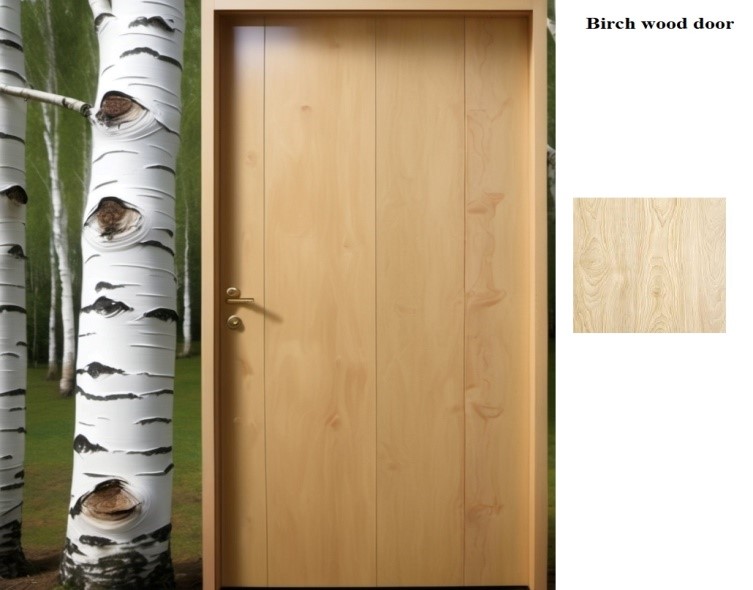
Cost Effect: Moderately Priced
Birch wood doors offer a smooth uniform texture with a pale, creamy appearance that can be stained to resemble more expensive woods like mahogany or walnut. Birch is a strong, durable hardwood that resists scratches and dents, making it suitable for both modern and traditional interiors.
Cherry Wood Door

Cost Effect: Expensive
Cherry wood doors are prized for their warm, reddish-brown tones and smooth, polished finish. Over time, cherry wood darkens, developing a rich patina that adds to its charm. This hardwood is both durable and elegant, often used in luxury homes to create a sophisticated, timeless look.
Cedar Wood Door

Cost Effect: Moderately Priced to Expensive
Cedar wood doors are highly sought after for their natural resistance to moisture, decay and insects. The wood’s distinctive reddish hue and aromatic scent make it a favorite for exterior applications. Cedar’s insulating properties also help maintain indoor temperature, making it a practical and aesthetically pleasing choice for homes in varied climates.
Walnut Wood Door

Cost Effect: Expensive
Walnut wood doors exude elegance with their rich, dark brown tones and striking grain patterns. Known for their hardness and durability, walnut doors are often used in high end interiors. The wood’s luxurious appearance and resistance to wear make it ideal for adding a touch of sophistication to both modern and traditional homes.
Advantages of Solid Wood Doors
- They look beautiful and bring a warm, natural feel to any home.
- With the right care wooden doors can last a long time, especially sturdy types like oak or mahogany.
- You can easily customize them with different finishes, paints or even unique carvings.
- Wooden doors are great at keeping rooms cozy in winter and cool in summer.
- They help reduce noise, making them a good choice for privacy and quiet.
Disadvantages of Solid Wood Doors
- Wooden doors can warp or swell if they get too damp or face big temperature changes.
- They need regular maintenance like sealing or refinishing to keep looking good.
- Generally, they cost more than metal or synthetic doors.
- They can attract pests like termites if not treated properly.
- Wooden doors are heavy so they may need strong frames and hinges.
- They are more vulnerable to fire unless specially treated.

